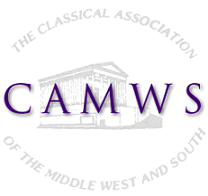The purpose of standards within education is to provide direction for our taught curriculum (content and skills) by identifying desired outcomes. Assessment, the means by which we determine whether or not we have met the standards, ends up being an afterthought in many curriculum discussions; it is a very rare thing indeed that people discuss assessment as a strategy to promote learning and the achievement of desired outcomes in the first stages of curriculum design. Nevertheless, a design approach for curriculum such as Backward Mapping, which begins with the Standards for Classical Language Learning and addresses assessment needs early on, can be very beneficial. Properly done, Backward Mapping is never a case of the “tail wagging the dog,” but rather a holistic approach to design that focuses attention through the Standards towards both the taught curriculum and assessment. In what follows, this article sketches out some basic history and observations about Backward Mapping, describes its basic principles, and discusses some potentials and pitfalls of the process. The central concern of this article, however, is to present two working models of Backward Mapping with the new Standards in order to illustrate this assessment-focused approach to curriculum design.

